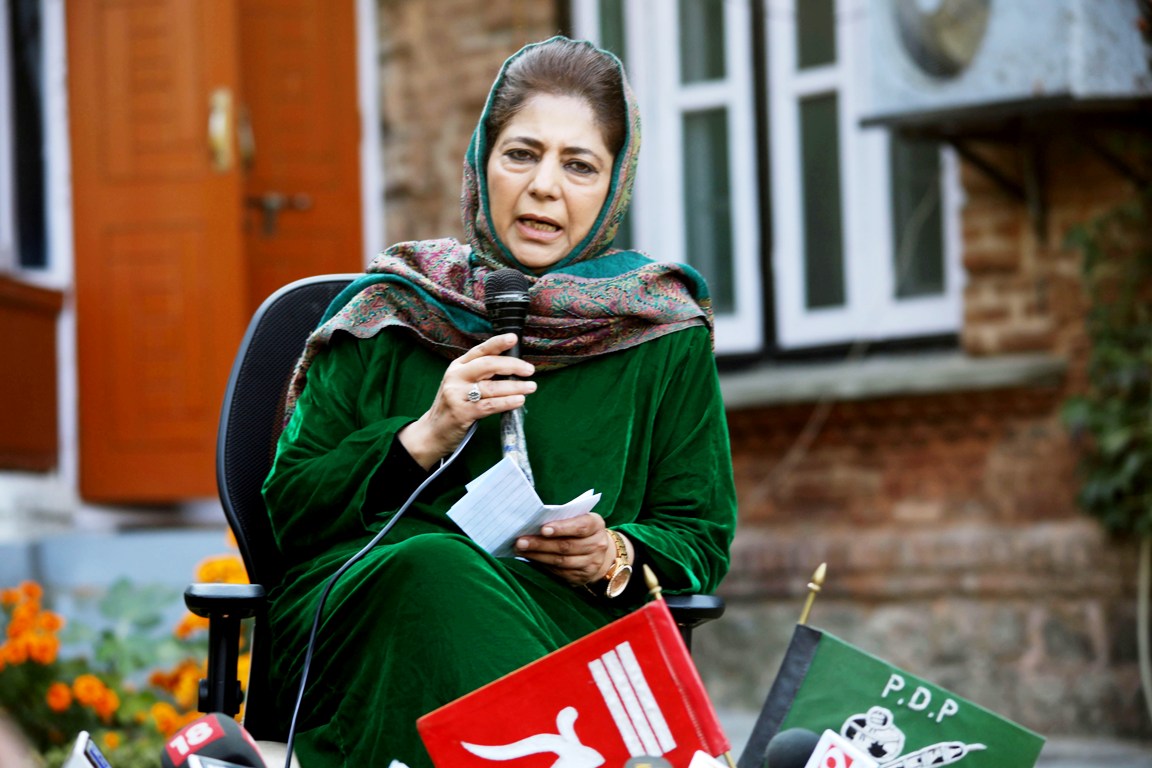KL NEWS NETWORK
SRINAGAR
In a significant decision aimed at building capacities to effectively meet furies of nature, Chief Minister, Mufti Mohammad Sayeed, Friday granted approval to the first-ever State Disaster Management Plan to reduce the vulnerability to hazards and enhance human and institutional capability to cope with disasters and natural calamities in a more effective manner.
Mufti Sayeed, who also heads the State Disaster Management Authority (SDMA), said the Plan was long overdue as there were lessons to be learnt from the devastating floods of 2014 in terms of real-time rescue missions for timely evacuation of people.
The Chief Minister made these remarks while chairing a high-level meeting of the State Disaster Management Authority, here this afternoon.
SDMA members, including Minister for Revenue, Javaid Mustafa Mir, Minister for Relief & Rehabilitation, LJ&PA, Syed Basharat Bukhari, Minister for CA&PD, Ch. Zulfkar, Minister for Transport. A. G. Kohli and Chief Secretary, Iqbal Khandey, who is also the CEO of SDMA, attended the meeting.
Laying stress on well-laid down Standing Operating Procedures (SOPs) while dealing with calamities, the Chief Minister exuded confidence that the new Disaster Management Plan, prepared by Tata Institute of Social Sciences (TISS), Mumbai, will work to identify and anticipate potential risks and ensure continuity in critical operations post-incident.
Mufti Sayeed issued directions for incorporating a Divisional-level Authority in the State’s Disaster Management Framework for better coordination between districts in case of calamities and emergencies. He also placed high-priority on forging alliance between the Government and public for better disaster management, especially in a state like J&K which is extremely vulnerable to natural disasters like floods, earthquakes and off late cloudbursts.
While briefing the Chief Minister about the broad contours of the State Disaster Management Plan, Commissioner / Secretary, Relief & Rehabilitation, Dheeraj Gupta, said the Plan comprehensively covers the entire gamut of operations related to disaster risk reduction activities at the level of the entire state. “It envisages setting up of Emergency Operations’ Centres (EOCs) at divisional and district levels and ensuring adequate framework for Disaster Governance, including funds generation mechanism, by taking on board all stakeholders in a structured and time-bound manner,” he said and added that a special provision has been kept in the Plan for developing human resources and their capacities by utilizing expertise of professional agencies like NDMA and NDRF.
A team of TISS experts also made a detailed presentation to highlight the objectives of the State Disaster Management Plan, in particular related to risk and vulnerability profile, preventive and preparedness measures, disaster response, besides rehabilitation and reconstruction issues. The State Disaster Management Plan approved today has the flexibility to undergo change by way of updating on a periodic basis. The backbone of maintaining the Plan remains carrying out of mock drills and regular risk assessment. To begin with, it envisages immediately setting up of EOCs at Jammu and Srinagar by positioning a core team in preparedness for meeting any eventuality related to vagaries of nature and man-made disasters.
The SOPs enlisted in the Plan cover entire range of disasters including earthquakes, floods, landslides, avalanches, windstorms, cloudbursts, drought, fires and biological and human-induced disasters.
















